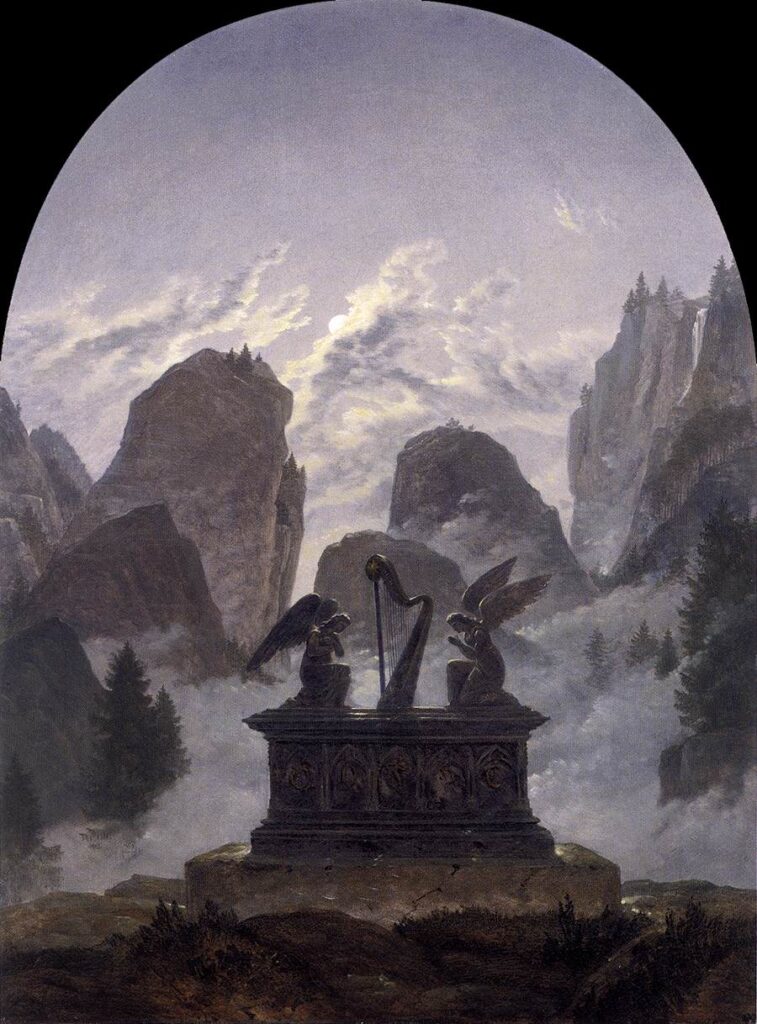The human being stands beneath the wheeling heavens, woven into their intricate fabric of lights and shadows, obedient to rhythms older than memory. Time is measured by their motion, seasons carved by their courses, fate written in their alignments. The body is pulled by them, the soul impressed with their signs, the mind conditioned by their tides.
But above the astral dome is a silence uncreated, the Ineffale, who is not bound to cycle or degree. The paradox of spiritual life is that we must endure the pressure of the stars while learning to serve only the One who spoke them into being. To live under the stars while serving the Uncreated is the vocation hidden in all authentic paths of gnosis.
I. The Realm of the Stars
The ancients called the visible heavens the moving script of destiny. From Babylon to Alexandria the art of reading the stars was regarded as the highest science, because within them the hidden geometry of existence was inscribed. Planets were gods, constellations were sigils of power, and the entire dome of the sky was the temple ceiling under which all creatures moved. We are not free of these powers. We are born at a specific moment, under a configuration, into a body that resonates with that arrangement. To be flesh is to be woven into the loom of the spheres.
The prophets of Israel denounced the worship of the host of heaven, but even their language trembled with astrology. The Psalms sing of the moon ruling the night and the sun rejoicing in its course. The book of Job describes the cords of Orion and the sweet influence of the Pleiades. In the Gospel account of the Nativity, the Magi follow a star to Bethlehem. Christianity is born under a sign in the heavens and does not despise the cosmic script. What it rejects is the confusion of symbol with essence. The stars can speak, but they are not the voice itself. They are heralds, not the king.
The power of the heavens is twofold: on one hand they are instruments of necessity, shaping fortune and temperament. On the other they are mirrors of truths that exceed their brightness. The soul that learns to see them as symbols already begins to rise above them. To live under the stars is unavoidable, but to remain their captive is not the destiny of the awakened.

II. The God of the Forms
The ancient gnostics taught that the world of form was fashioned by a lesser power, a craftsman of shadows who mistook his reflection for the Light itself. In this vision, he is the god of structure and boundary, the god of decree, the god who governs through the motions of time and the chains of the zodiac.
To adore this power as ultimate is to fall into idolatry of the reflection. It is to take the shadow for the flame, the symbol for the reality. The god of the forms maintains the cosmos, but he is not the source of its being. He rules the cycles, but he did not breathe the silence that stands above them. In the mystical sense, he is the demiurge, the lord of appearance, who confines the soul to wheel and chain.
The prophets and seers did not deny his rule. They acknowledged the weight of law and the stern necessity of fate. But they lifted their eyes beyond him. They proclaimed the God who cannot be imaged, who cannot be contained within temple or calendar, who cannot be named within the compass of the stars. This is the Ineffable, the Father of lights, the abyss of being from which all emanates. The task of wisdom is to discern the difference between the god of the forms and the God who transcends form itself. The first may discipline the flesh. The second alone can free the Spirit.
III. Serving the Ineffable
To serve the Ineffable is to pierce through the veil of appearance without rejecting its presence. The stars remain above. The body remains under their sway. Fortune continues to turn her wheel. But the soul discovers that another allegiance is possible. The flesh may obey the astrological script, but the Spirit is called to mirror the One beyond the script.
The mystics spoke of two births. The first is in the womb of the mother, under the aspect of the planets. The second is in the womb of the Spirit, under the aspect of eternity. In the first, we become citizens of the world. In the second, we become citizens of the kingdom not made with hands. The second redeems the first. It places the temporal within the Light of the eternal.
The path of the soul is not escape from the cosmos but transfiguration within it. To live under the stars is to acknowledge the weight of necessity. To serve the Ineffable is to offer that necessity back to the source, so that law becomes grace, fate becomes sigil, and time becomes the stage of eternity.
Gloria in Excelsis Deo.
